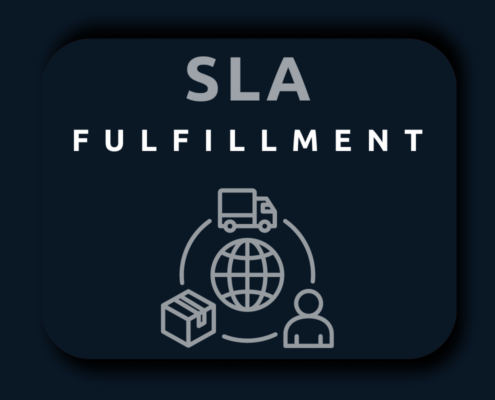Reading Time: 9 minutes
We are truly living in a digital world. Without even leaving your home, you can, at the click of a button, open bank accounts, transfer funds across borders, and seamlessly manage your finances – all thanks to fintech. From the first ATM to cryptocurrencies, the fintech sector is swiftly evolving, transforming how we all interact with financial services. But where does this data get stored?
What is Fintech?
Fintech is financial technology used to improve and automate the delivery and use of financial services. Examples of fintech applications include robo-advisors, payment apps, peer-to-peer (P2P) lending apps, investment apps, and crypto apps.
Fintech companies and financial service providers generate a lot of data. From customer information and financial transactions to market data, all of this is essential for these companies to operate effectively. Due to the nature of the data, this needs to be securely stored whilst also being readily available for processing and use. On top of that, the storage and use of the data are highly regulated with varying restrictions across different countries.
Fintech has the ability to transform complex financial services into individual easy-to-use offerings. All in all, streamlining costs and improving efficiency. This is having a major impact on the way financial services are delivered and is also driving the need for new data center infrastructure.
Digital Disruption
The intersection of fintech and financial services is creating both opportunities and challenges for the financial sector. On the one hand, fintech companies are using technology to improve the customer experience and make financial services more accessible to everyone. On the other hand, the rise of fintech is also putting pressure on traditional financial services providers, who are facing increased competition and the need to invest in new technology.
Fintech is seen as ‘disruptive’ technology. It has altered the financial sector by using new tech to revolutionize the way these services are delivered. Most of this tech assists with the heavy regulations imposed on financial services to deal with issues like fraud or reckless lending.
The rise in the uptake of fintech is driven by a number of factors,
- Access to the internet and the adoption of mobile devices,
- The Internet of Things (IoT), and
- The demand for personalized services.
Some refer to the 2008 financial crisis as the tipping point for banks to move towards more advanced tech-enhanced approaches as heavier regulations added to workloads and made the environment highly complex. Banks and financial services then looked towards fintech operations to assist, streamline, and innovate.
Overall, the future of fintech and financial services is bright. Fintech companies are continuing to innovate and offer new and better ways to manage money. Traditional financial service providers (FSPs) are embracing technology and working to improve their customer experience. As a result, consumers are benefiting from more convenient, affordable, and personalized financial services.
What’s Trending in Fintech
- Artificial Intelligence and Machine Learning
You cannot open a news article without a mention of AI. Fintech companies can leverage this technology and machine learning to automate financial processes and provide feedback on customer behaviors. This can reduce business costs while concurrently improving accuracy and efficiency.
- Embedded Finance
This is a category of services that are used within a certain framework or platform, like the ‘Pay Now, Pay Later’ model. When making online purchases, customers can opt to pay in increments over a set period of time. A trend that is likely to dominate in 2023.
- SaaS
Software as a Service is a cloud-based application service allowing users to access these apps over the internet. This includes the likes of Zoom, Salesforce, and Microsoft 365. Often these SaaS applications come with increased security protocols for storage and management that businesses could not afford on their own.
- Open Banking
Also known as Open Bank Data, open banking is a practice that allows customers to securely share their data with third-party financial service providers to access, use, and share through an API. This allows the customer opportunities to access new markets or products and services. Overall, it provides greater control over where financial data is stored as well as allows an easier transfer between providers.
- IoT
IoT technology enables physical devices to connect to the internet, which means that in the space of financial services, the implications for fintech are extensive. The use of IoT is so broad, everything from voice authentication to prevent fraud to sensors monitoring customer behavior for automatic payments.
- Blockchain
In essence, blockchain is a decentralized ledger that makes it possible for customers to transfer digital assets without any intermediary. It can be used across the board for a plethora of financial applications, from digital wallet transactions to smart contracts. Data usage is evolving. With innovations like AI and ML now underpinning the global financial industry’s progression, the associated infrastructure needs to be transformed. This means a need for improved storage, security, processing, and performance.
Data Storage and Hybrid Approaches
So, where will all this data be stored? Traditionally, data were stored on servers found on-premises. This made the data easy to access, allowed businesses control over the storage, and made compliance a bit easier to manage. However, being able to control this storage meant massive capital expenditure for the company – purchasing everything from the storage facility to the servers to staff managing the site.
Following COVID and the work-from-home scenario, all sectors, including finance, made a shift toward the cloud. The cloud-based infrastructure runs on IT gear located in a centralized data center. However, the potential risks make this option a partial solution. While it is less labor-intensive and scalable, there are various compliance restrictions that come into play when considering the cloud. Things like data sovereignty or country-specific regulations – something we touch on later in this whitepaper. Furthermore, while it may not appear as costly, processes such as data egress from the cloud often carry a price for each transfer or the fees associated with overprovisioning storage space, thereby racking up the charges.
Colocation can take away a lot of the risk and reduce capital expenditure. While the FSPs will still need to purchase the hardware, they will need to make use of an IOR to get this gear into the colocation facility while the data center itself provides the housing, cooling, powering, and security required. Data centers provide greater reliability, security, scalability, and flexibility when looking to house fintech data.
The Role of Data Centers in Financial Transactions
- Security: Data centers make use of advanced security protocols and measures to prevent any unauthorized access or cyber threats.
- Processing: Sophisticated hardware is required to be able to store and process the data at the rapid pace required for fintech applications. The use of advanced tech to leverage this high-speed processing capability enables FSPs to make more informed decisions with less risk.
- Reliability: Colocation facilities make use of redundant power sources, cooling systems, and adequate backup generators to ensure optimal operations at all times.
- Scalability: As FSPs grow and innovate, the same is needed for their data storage and processing. Data centers provide this level of bespoke scalability.
- Sustainability: Data centers are looking at energy-efficient practices to reduce energy costs and lower their carbon footprint. Read more on data center sustainability here.
A hybrid approach is the best strategy to deliver your business outcomes, and it all boils down to risk. While some may prefer a full cloud solution, there are a number of challenges, including data security, vendor lock-in, and compliance with regulations. Overall, a hybrid approach offers the best of both worlds. Cloud computing provides the flexibility, scalability, and cost savings that fintech and financial services businesses require, while colocation provides the security, reliability, and compliance that financial services and fintech companies need.
Regulations, Politics, and Risk
Regulation is a constant concern in the world of fintech. As new tech emerges, regulations are often late to the party. Look at cryptocurrencies – in some countries, Initial Coin Offerings are unregulated and have become hotbeds for fraud and scams. For the most part, existing legislation is being used to regulate new fintech. The issue is that these regulations do not possess the full scope of the new technology and will only be able to partially (if at all) regulate the application. Then there is the full discussion around data sovereignty versus data residency and how this all comes into play.
Data sovereignty is an understanding that a country has the authority to govern (and control) the data generated within its borders. This means that any data stored outside of an organization’s host country is subject to the laws of the country in which that data is stored. This can cause confusion and often result in conflicting legislation. Any failure to adhere to data sovereignty laws can result in financial penalties and legal actions.
Whose Data is it Anyway?
An example is that of the European Union’s GDPR laws which also cover data sovereignty. Under the GDPR, any data collected from EU citizens must reside in EU jurisdictions or countries with similar scope in their protection laws. This applies to both companies who collect the information as well as those who offer data collection services.
Whereas data residency refers to the decision of a business to store its data away from the origin in a foreign location. Once moved, this data is now subject to the laws and regulations of that specific region. This is something for cloud users to think about. You will need to carefully review your Service Level Agreements with the cloud providers.
Not only do financial service providers and fintech organizations need to be worried about consumer protection, market conduct, and taxation variations when providing services in foreign countries, but there is the added worry of how to get their IT hardware into these destinations. Trade compliance is as complex as ensuring you meet the regulatory standards of the country you are entering. Making use of a third-party Importer of Record is the best way to ensure that you do not land up with seized gear, financial penalties, or legal ramifications.
What Does the Future Hold
The future of financial services is likely to be characterized by continued innovation, increased competition, and stricter regulations. Fintech companies will continue to disrupt the industry, and traditional financial services providers will need to embrace technology in order to compete. Data center technology will play an increasingly important role in the financial services industry, as it helps providers to improve efficiency, reduce costs, and enhance risk management. Regulations will continue to evolve, and financial services providers will need to stay up-to-date on the latest requirements in order to remain compliant.
The financial services industry is at a crossroads. It can either embrace change or be left behind. Those who embrace change will be well-positioned for success in the future.
By and large, the financial services industry makes use of a lot of data. And with it comes challenges and regulations impacting the industry. As the world becomes more and more connected, businesses need to understand each and every nuance involved in country-specific regulations, from who has rights to data, where it is stored, and how it is processed.





